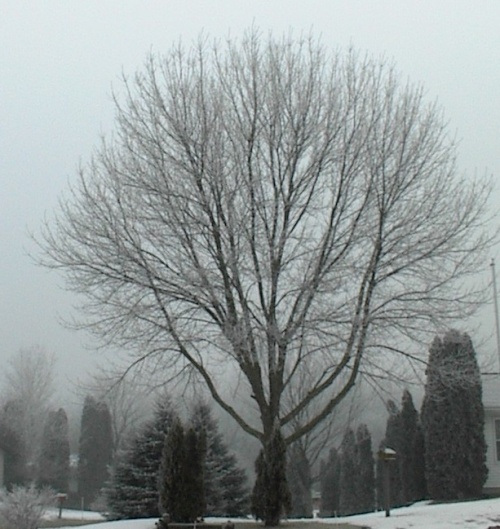“Winter, slumbering in the open air,
wears on its smiling face a dream…of spring.”
– Phil Connors in Groundhog Day
February 2: now doesn’t this date feel a wee bit strange? It seems it was only a couple of weeks ago that my mother and I were exchanging e-mails bemoaning that we were so far behind in our holiday preparations and questioning if we would ever be ready. I remember writing at one point, in an effort to soothe our mutual stress, that I knew it would only be a blink before we found ourselves over-the-hump and into January, wondering why we had obsessed so much over such unimportant details. Well, here we are in February already. Whew! I think January just evaporated.
Today, our shortest of months brings us the media event that is Groundhog Day, not to be confused with the Bill Murray, 1993 classic movie of the same name. In it, his egocentric weatherman character, Phil, is forced to re-live the same day over and over. While billed as a comedy, its spiritual component is celebrated by those who got the lessons of love the way Phil eventually did. Perhaps revisiting that movie would be a more valuable yearly tradition than obsessing about a furry critter?
When you think about it, this is a bizarre holiday, but at least we don’t have to make any special preparations for it, and it is an innocent, mid-winter diversion. Custom dictates that normally intelligent people gather around a burrow or cage during a cold sunrise to observe whether or not a large rodent sees his shadow. If the sun is out, he will be scared and toddle back into his den, foretelling another six weeks of winter. However, if it’s cloudy and he is unperturbed, he will remain outside, playing, eating, and promising an early spring. Of course, barring the attendance of Dr. Doolittle, no one can ask the furry fellow what he actually sees, so some self-appointed translator makes the pronouncement for him. Then, the proclamation is quickly relayed to the waiting public by the many news organizations looking for any headline that isn’t political. This legend was brought here by German and other European immigrants who believed that badgers and bears behaved in a similar fashion, and groundhogs were then assigned the task of prognostication in the New World.
Please note: I do try not to be gender-biased in my writing. I refer to these groundhogs as male, because I have yet to hear of a female participating. I’ll let you draw your own conclusions about that. Some of those hogging all the publicity are named Jimmy (Sun Prairie, Wisconsin), Buckeye Chuck from Ohio, General Beauregard Lee (Lilburn, Georgia), Staten Island Chuck (a.k.a., Charles G. Hogg of New York), Wiarton Willie (Bruce County, Ontario), and the most infamous of all, Punxsutawney Phil of Pennsylvania.
As if this day’s whole scenario isn’t goofy enough, if you stop to consider, it’s also completely backward. Doesn’t it make more sense that he would want to stay outside to bask in the sunshine, but go back inside to a warm bed if it’s cloudy? I know I would. Actually, that’s a much more accurate depiction of his natural behavior. Groundhogs, which are actually “woodchucks” (Marmota monax to be precise), are sun lovers and are especially active in the early morning and late afternoon. They belong to the large group of mammals labeled Rodentia and are members of the Family Sciuridae or squirrel family. They are considered to be marmots, of the genera Marmota. Regardless of how fancy-schmancy their Latin monikers sound, a groundhog by any other handle is still a rodent. The woodchuck name is derived from the Cree Indian word, “wuchak” that was used to identify several different animals of similar size and color, not to suggest its habits. The term “groundhog” is more descriptive of its way of waddling, squat build and habit of burrowing underground. They generally hibernate from October to March, so the beginning of February is a bit early to expect any activity out of them in this neck of the woods. Which might explain why some of them are pretty cranky when disturbed by holiday revelers who’ve sustained bites and nips as a result. That, and the little known fact that during the evening of February 1, they’re busy celebrating their major rodent holiday, National Silly Humans Night, and are actually quite hung over come dawn.
Woodchucks were fairly scarce when North America was first being settled, but as dense forest was turned into woodlots, pastures and cultivated fields, their numbers exploded. They prospered and expanded their range considerably as their favorite home sites along woodland edges, fencerows and meadows increased. These vegetarians are major hole-diggers and are now common over much of the eastern United States, some parts of the West, and up throughout Canada. Many farmers consider them nuisance animals, because they compete on a small scale with cattle for food, can damage pasture and crop fields, and they do occasionally raid vegetable gardens. Their main diet consists of grasses, clover, alfalfa and plantain, but at times, they will feed heavily on corn and cause extensive damage in a backyard garden. However, exterminating them whenever possible can be shortsighted, as that overlooks the benefits they provide. In moderate numbers, they are more beneficial than harmful. They defecate inside a special excrement chamber inside their burrows, which fertilizes the earth. Their digging aerates the ground, mixing in moisture and organic matter while bringing subsoil up to the surface for transformation into topsoil. Woodchucks are a critical part of an ecological chain. Their burrows (up to five feet deep and thirty feet long) provide shelter for other fur and game animals, many of which destroy huge quantities of farm pests like rats, mice and insects. Skunks, raccoons, opossums, foxes, rabbits and snakes all shelter in woodchuck holes, and each of those have their own integral role in Mother Nature’s scheme of things. Of course, it always comes down to balance, and that’s often the tricky part.
By the way, it’s never been definitively determined “how much wood would a woodchuck chuck if a woodchuck could chuck wood,” because they don’t…except in Geico commercials.
Many hunters consider groundhogs valuable game animals, although their fur is low in value. They are no longer wasting the carcasses of animals they shoot. The meat is very tasty and can be fried, roasted or stewed, but is never labeled “ground chuck.” Automobiles also inadvertently help control the population.
Regardless of what transpires in the world of rodents on February 2, the fact is that the date is almost six and a half weeks before the Northern Hemisphere’s official, astronomical arrival of spring on March 20. If you really want to use shadows to calculate anything, dance with your own and watch as it changes a smidgen each day, chronicling Ol’ Sol’s progression through the firmament toward the Vernal Equinox. Spring will arrive faster than it feels now, and I predict that it will only be another blink or two before we’re remarking about how fast summer got here. Time has a way of escaping while we’re looking the other way, but if you live in the Now and enjoy each moment, it won’t matter. Just keep on dancing, shadow or otherwise, and this being leap year, we have an extra day this month to do so!
Oh…and did he see his shadow you ask? Here in southwest Wisconsin, Groundhog Day 2012 dawned with freezing fog so thick the Weather Service issued a dense fog advisory until 10 a.m., long after the appointed time for divination. In a weird sort of way, it wasn’t cloudy or sunny. Satellite views showed no visible clouds overhead. However, on-going snowmelt due to recent daytime temperatures almost 20 degrees above average, generated enough moisture to completely obscure the sun. There were no shadows cast. In fact, there was hoarfrost coating everything. Yee-hah! Bring on an early spring!
Happy Groundhog Day!
******©UluOla 2012******


A fine treatise on one of this country’s questionable traditions. Marmota monax exhibits more common sense than many of those who poke at him every February. Well done.
LikeLike
By: Paul on February 5, 2012
at 4:39 pm
Thank you, Paul. And yes, you’re right–human common sense seems to be a rarity these days!
LikeLike
By: Michelle UluOla on February 5, 2012
at 6:06 pm
always a joy…Love your writing almost as much I love you. Sending out happy vibes to fight winters wrath…the hidden sun. Thanks.
LikeLike
By: Steve Booth on February 2, 2012
at 7:00 pm
Thank you, Steve, for your deLightful vibes and support [and assistance] 😉 Love you, too!!
LikeLike
By: Michelle UluOla on February 3, 2012
at 7:22 pm